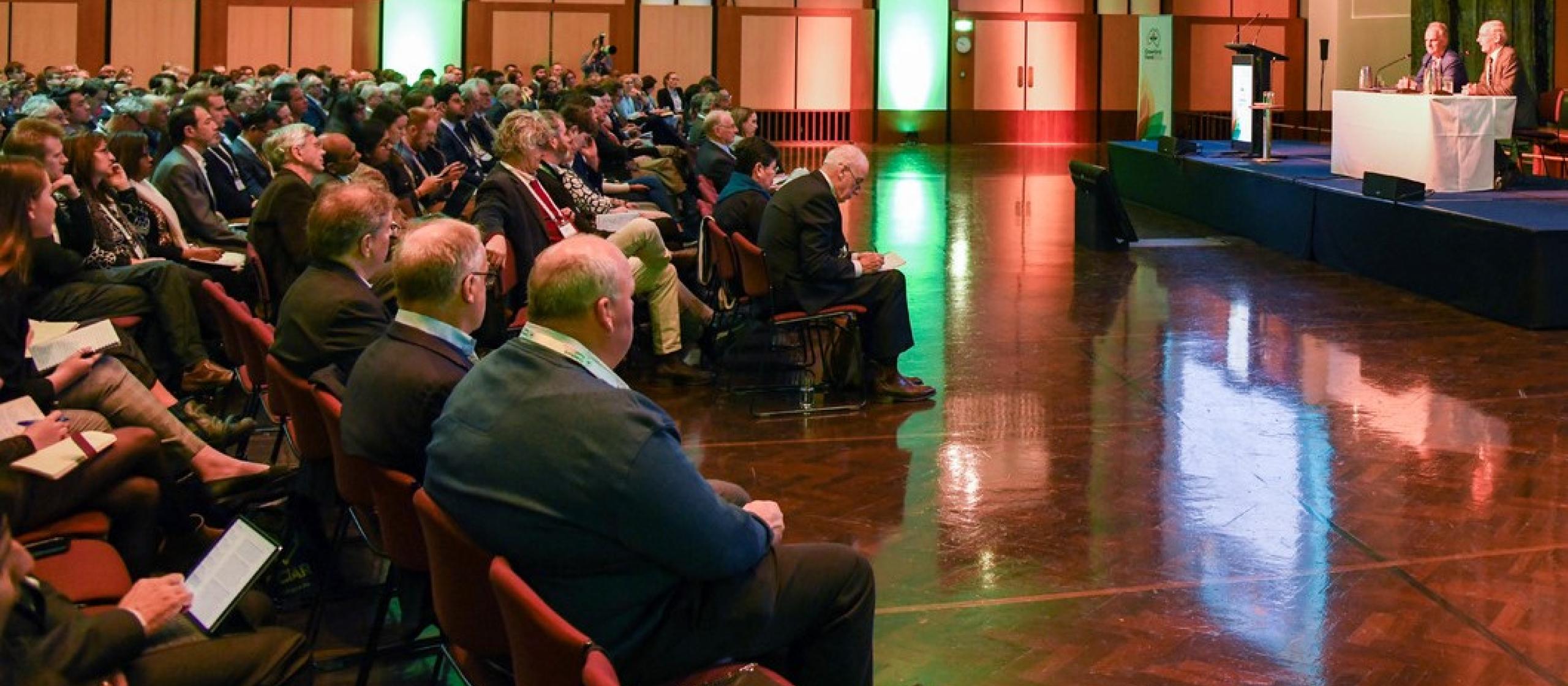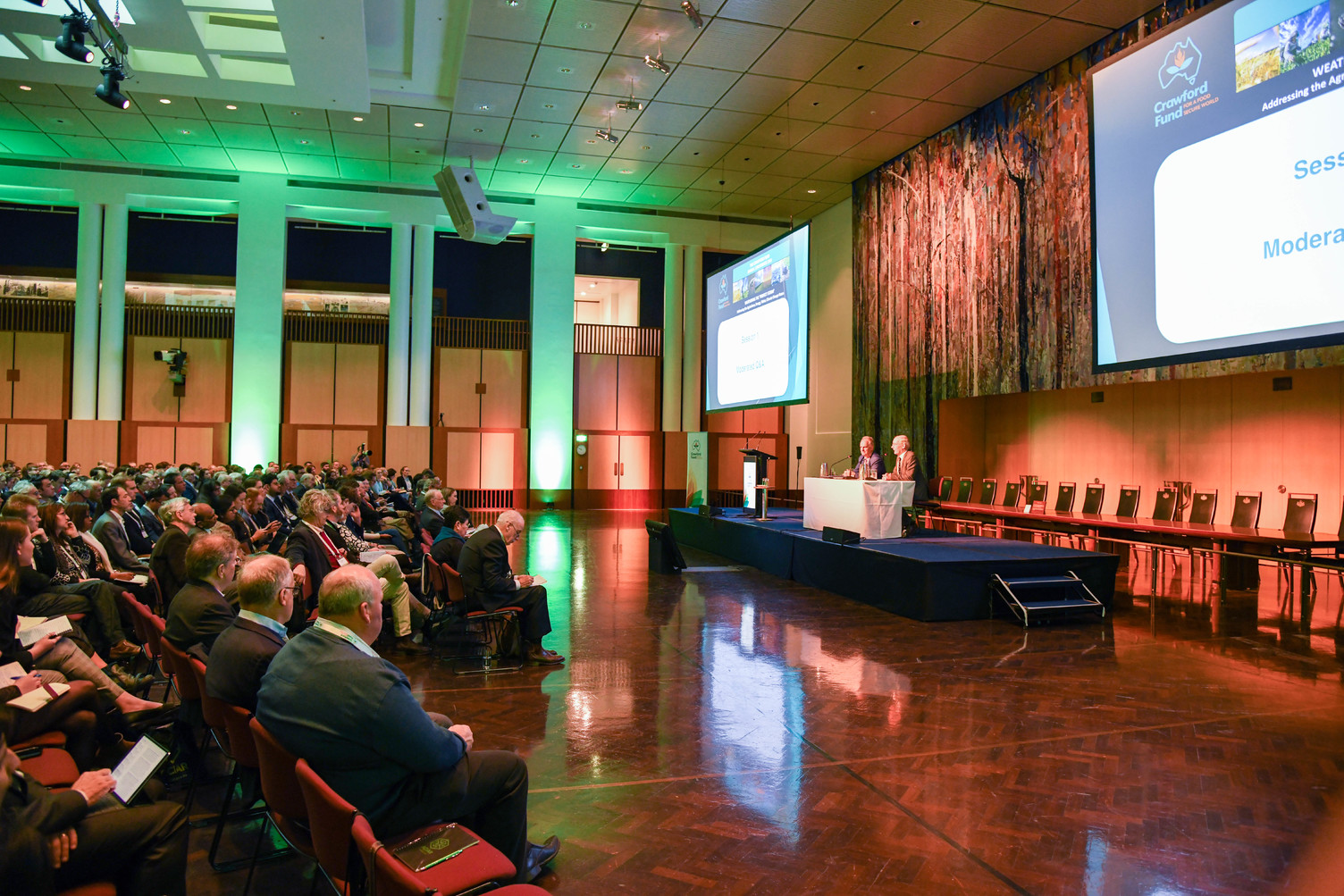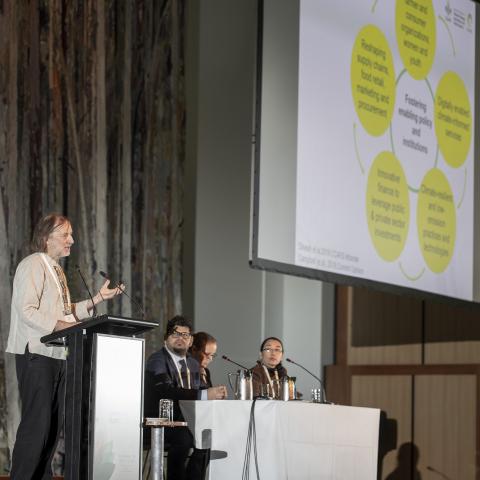- HomeHome
-
About ACIAR
- Our work
- Our people
-
Corporate information
- ACIAR Audit Committee
- Commission for International Agricultural Research
- Policy Advisory Council
- Agency reviews
- Executive remuneration disclosure
- Freedom of information (FOI)
- Gifts and benefits register
- Information publication scheme
- List of new agency files
- Contracts
- Legal services expenditure
- Privacy impact assessment register
- Commonwealth Child Safe Framework
- Benefits to Australia
- Careers
- 40 years of ACIAR
-
What we do
- Programs
- Cross-cutting areas
- Resources
- Where we work
-
Funding
- Research projects
- Fellowships
-
Scholarships
- John Allwright FellowshipScholarships to study in Australia for ACIAR partner country scientists to have Australian postgraduate qualifications
- ACIAR Pacific Agriculture Scholarships and Support and Climate Resilience Program
- Alumni Research Support Facility
- Publications
- News and Outreach
Date released
15 November 2019
The challenge was posed as researchers addressed the agriculture, energy, water and climate change nexus at The Crawford Fund’s 2019 conference, ‘Weathering the perfect storm'.
The conference heard that the projected 70% increase in demand for food globally by 2050 would be accompanied by a 28% increase in demand for water and a 38% increase in demand for energy. Current agricultural practices produce 14% of total greenhouse gas emissions globally.
A week earlier, the Special Report on Climate Change and Land (SRCCL) from the Intergovernmental Panel on Climate Change (IPCC) concluded that keeping global warming to well below 2ºC could be achieved only by reducing greenhouse gas emissions from all sectors, including land and food.
However, the modest uptake of technology, science and practices for growing food under a changing climate indicated the food production system is not yet ready to meet the ‘massive’ challenge.
‘Current agricultural technologies can only achieve 20–40% of what is needed by 2030,’ said Dr Bruce Campbell, Program Director for the CGIAR Research Program on Climate Change, Agriculture and Food Security, who cited research showing that 11–21% of small-scale farmers across Africa, Asia and Latin America were ‘stepping up’ to the challenge of changing their practices.
‘None of the changes required in agricultural production to make a positive impact on food production and the environment will happen without the right policies and institutions,’ Dr Campbell told the conference.
So, what will it take to transform the food production system to manage climate change?
According to Dr Campbell, there is a five-step pathway to such a transformation:
- Establishing climate-resilient and low-emission practices and technologies
- Using innovative finance to leverage public and private investments
- Reshaping supply chains, food retail, marketing and procurement
- Empowering farmer and consumer organisations, women and youth
- Delivering and facilitating the use of digitally enabled, climate-informed services.
At the centre of this ‘change strategy’, as Dr Campbell called it in his keynote presentation, ‘Weathering and halting the perfect storm’, were the policies and institutions that would enable this transformation.
‘Farming as we know it will not be feasible in many places by 2090. This is a massive adaptation and mitigation challenge. It’s why I’m calling for a transformation to our food systems,’ said Dr Campbell.
‘Success under a changing climate must go way beyond business as usual. Tens of millions of [small-scale] farmers [in developing countries] need help and incentives to manage the changing climate.’
However, scientists and policymakers needed to get together before policy incentives for farmers could be built, said Dr Jim Woodhill, Food Systems Adviser for the Sustainable Development Investment Portfolio with the Australian Department of Foreign Affairs and Trade.
‘The framework between science and policy to build the incentives required to reduce the environmental impact and emissions created by agricultural production is not in place,’ said Dr Woodhill.
He said incentives and policies must be tailored for specific sub-groups of farmers, especially small-scale farmers. Farmers should not be treated as a homogenous group, he said.
‘There are different scales, different sizes, men, women, and different geographic locations, so we have to disaggregate who we are talking about when we use the term “small-scale farmers” to understand what sort of incentives are going to drive changes to practices,’ Dr Woodhill said.
‘The next decade is going to need a fundamental transformation of small-scale agriculture in order to meet some of the environmental and social issues we need to address.’
These small-scale farmers, however, should not be the sole focus of the international agricultural research and development community, according to Dr Lini Wollenberg of the University of Maine, USA.
Speaking at ACIAR a day earlier, Dr Wollenberg said efforts by small-scale farmers to mitigate climate change ‘won’t cut emissions much’. ‘Working with smaller, vulnerable landowners [in developing countries] is not necessarily the answer but working with bigger farmers and cooperatives in the big-emitting countries is,’ said Dr Wollenberg.
‘Four countries—Brazil, China, India and the USA—plus the European Union produce 50% of agriculture’s emissions. In scaling up lowemissions development in agriculture, the countries targeted matter.’
Regardless of which type of farmer the research for-development community is working with—and in which country—farmers need commercial incentives to use new technologies to grow food.
‘What we need are the right business models and the right kinds of loans that banks can provide. It’s not a matter of subsidies; it’s a matter of re-orienting financial flows into this sector,’ Dr Ajay Mathur, Director-General of The Energy and Resources Institute, told the Crawford Fund conference.
Using solar energy to pump water was raised by both Dr Mathur and Dr Campbell as an example of a practice small-scale farmers in India and Africa (where 5% of cropland is irrigated, compared to the global average of 20%) could use to mitigate the risk of climate change. When a farmer chose to sell excess energy back into a local grid for other farmers to use, solar-powered irrigation became a ‘remunerative crop’, said Dr Campbell. But a business model still needed to be developed to make solar power and renewable energy the more viable solution for farmers on a bigger scale, Dr Mathur said.
Implementing interventions—be they policy, social or commercial—does not appear to be a barrier to scaling up science-based climate adaptation and mitigation practices, with researchers showing confidence in well-established participatory processes with farmers in developing countries.
‘Participatory approaches in research help build trust among diverse stakeholders—it’s been the key to the implementation of interventions in building Climate Smart Villages in South-East Asia,’ said Professor Alice Joan Ferrer, University of Philippines Visayas, Philippines, who gave examples of how climate-smart agriculture was being integrated into existing farming systems to transform smallholder farming food systems in Laos, Vietnam and the Philippines.
So, while a lack of political will is one risk inhibiting the contribution of agricultural research and development to building food security under a changing climate, another major issue is consumerism.
In his keynote address to the conference, ‘Can we feed the world without wrecking the environment?’, Professor Sir Charles Godfray, Director of the Oxford Martin School, Oxford, UK, highlighted the impact increasing meat consumption would have on food systems and human health.
‘Eating a healthy diet as prescribed the World Health Organisation (WHO) will result in 5.1 million fewer deaths per year by 2050, with most of these lives being saved in the developed countries,’ Professor Godfray said. ‘We need a green revolution, again, and the revolution has to be not only on the supply side, as the industrial revolution and the green revolution were, but also on the consumption and demand side.
‘With “business as usual” we expect greenhouse gas emissions to increase by about 50% by mid-century. By just making a dietary shift [as recommended by WHO] the increase goes from 50% down to 7%.
‘If we care about reducing the effects of agriculture on greenhouse gas emissions, the single thing we really need to do is to think about diet change.’
However, reducing the impact of agriculture on the environment is not as simple as having more meat-free days. Greenhouse gas emissions from red meat production could be reduced through better land management, input-use efficiency and carbon sequestration, said Dr Di Mayberry, a Senior Research Scientist at the CSIRO. Also, livestock production was critical for livelihoods in low-income countries, said Dr Mayberry, and although epidemiological data indicated healthy diets contained more fruits and vegetables, growing these foods was water-intensive, Professor Godfray added.
According to Sarah Barker, Special Counsel for Climate Risk Governance at law firm Minter Ellison, who gave the closing keynote address of the conference, financial and legal risks were driving the business response to climate change. Policy makers and consumers needed to catch up.
Despite the community’s concern for environmental issues, led mainly by millennials, the response of consumers to climate change was yet to be driven in the way business had been, she said.
Ms Barker said a raft of policy and regulatory shifts—including carbon taxes and national policies that set emissions, and renewable energy targets inspired by the Paris agreement on climate change—were forcing responses in the corporate world that were yet to be seen in the community.
‘Trying to convince the “global north” [consumers] that they need to reduce their share, with human nature being as such I don’t think it will ever happen unless it is forced,’ Ms Barker said.
ACIAR is doing its part by ensuring climate change is front and centre of its research projects. Articulated in its 10-year strategy is an objective focussed on ‘managing natural resources and producing food more sustainably, adapting to climate variability and mitigating climate change’.
This recommitment builds on ACIAR’s long history of research and work to help its country partners—including smallholder farmers—adapt to climate change. New research supported by ACIAR will add to this with projects now covering climate change mitigation as well.
This aligns well with the priorities of ACIAR’s partners—particularly in the Pacific. At the Pacific Island Forum held in August this year, leaders ‘reaffirmed climate change as the single greatest threat to the livelihoods, security and wellbeing of the peoples of the Pacific’.
Beyond the Pacific, ACIAR’s most important multi-lateral partner is CGIAR—including CCAFS. Adopting a pathway to transform food production and move to climate-smart agriculture—as proposed by CCAFS’s Dr Campbell—can only be achieved with many different partners, each doing their part, from helping smallholder farmers, to changing government policies, to revolutionising businesses. And everyone has a role to play from farmer to consumer.





